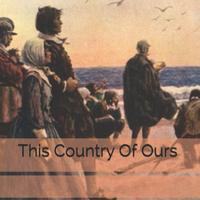Part 4. Chapter 39 - The Founding of New Jersey
Out of New York another state had been carved. For before New York had been taken from the Dutch, before Nicholls had so much as reached the shores of America, James, Duke of York, had already given part of the land which he did not yet possess to two of his friends, Lord Berkeley and Sir George Carteret. Sir George had been Governor of the Island of Jersey in the English Channel. When the Revolution broke out in England he had defended the island stoutly against the soldiers of the Parliament, and had kept the King's flag flying on British soil longer than any other man. So now that the Stuarts were restored King Charles remembered Carteret's loyalty, and he called this tract of land New Jersey in his honour. For this great estate Sir George and Lord Berkeley had to pay only ten shillings a year and a peppercorn.
Nicholls of course knew nothing about these grants, and when he heard of them he was grieved that the Duke should have given away so much valuable land. He had besides allowed some Puritans from New England and others to settle on the land after making agreements with the natives. And this led to trouble later on.
Meanwhile Sir George lost no time in settling his land in his own way. He at once sent out some colonists and Philip Carteret, a cousin of his own, as Governor.
On a summer day in 1665 Philip Carteret landed. He set up no crosses, and made no prayers, but with a hoe over his shoulder he marched at the head of his men, as a sign that he meant to live and work among them. A little way inland he chose a spot on which to build his town and called it Elizabeth, in honour of Sir George Carteret's Wife. Things went well enough until the time came for rents to be paid. Then many of the settlers, who had been there before Carteret came, refused to pay. For they said they had bought their land from the Indians, and owed nothing to Sir George. But as the Governor insisted on his right they rose in rebellion. They held a meeting at Elizabethtown, deposed Philip Carteret, and chose James Carteret a weak and bad son of Sir George, as their Governor. Seeing nothing else for it Philip went home and laid his case before Sir George and the Duke. They both supported him, so the rebels submitted, James Carteret went off to New York, and Philip again became Governor of New Jersey.
Meanwhile Lord Berkeley had grown tired of all the trouble, and he sold his part of New Jersey to some Quakers. So henceforth New Jersey was divided into two, East Jersey and West Jersey, East Jersey belonging to Carteret, West Jersey to the Quakers.
In 1680 Sir George Carteret died, and his part of New Jersey was also sold to Quakers, one of whom was William Penn, afterwards to become famous in American history. Soon after this New Jersey fell on very troublous times, of which it would take too long to tell. But at length the two Jerseys were again made into one, and in the time of Anne the colony became a Royal Province. Then for thirty-six years it was united to New York, but in 1738 was again divided and has remained a separate state ever since.

